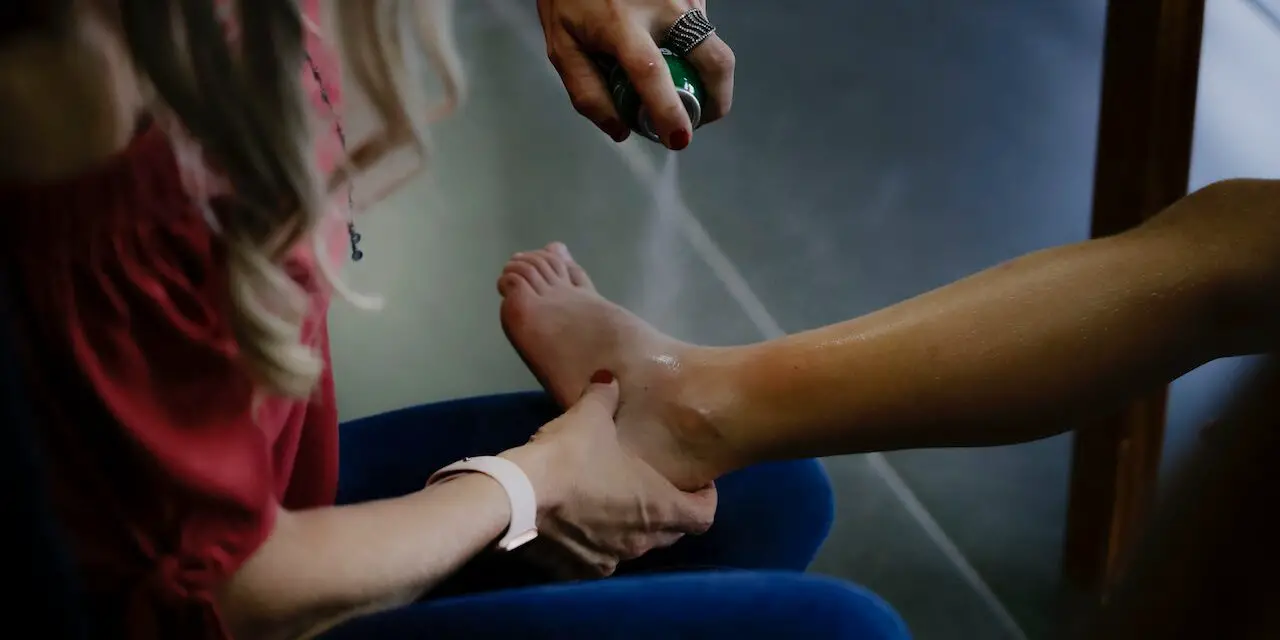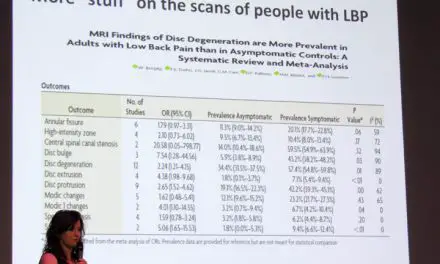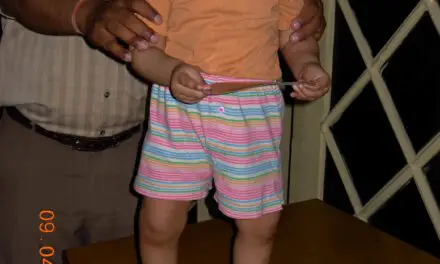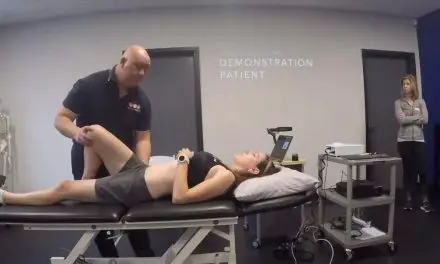Roughly 30,000 ankle injuries occur everyday in the U.S. making it one of the most common musculoskeletal injuries. Ankle sprains are common for a number of reasons. We often demand that our ankles traverse uneven terrain such as grass, gravel, and sand.
Wearing shoes that are more fashionable than functional (think: high heels) asks your ankles to support the entire weight of your body on little more than the half-inch surface of the tip of the heel. High impact activities such as jumping and landing can also wreak havoc at your ankle joint.
It’s important to get proper treatment for your ankle sprain to minimize your risk of developing repeated ankle sprains or chronic instability. A 2021 systematic review examined more than 3,800 people with a history of ankle sprain and found that nearly 50% of them experienced chronic ankle instability.
Ankle sprains and fracture differences
In the simplest of terms, ankle sprains describe injuries to the ligaments of the ankle while ankle fractures describe breaks in the bones of the ankle joint. Moving too far in any given direction will cause the ankle ligaments to stretch or tear resulting in a sprain.
Ankle sprains generally occur in three main regions of the joint: lateral, medial, and syndesmosis (“high” ankle sprain). Most of the structure stability for the lateral ankle is provided by ligamentous support.
Lateral ankle sprains are the most common type of sprain and involve the anterior talofibular, calcaneofibular, and posterior talofibular ligaments. As with sprains to the wrist or knee, ankle sprains are graded using a 3-point scale with the mildest injury being Grade I and the most severe being Grade III (complete tear).
A lateral ankle sprain is commonly accompanied by a large amount of swelling on the outside of the ankle that is about the size of a golf ball. You may or may not be able to put weight through your foot and ankle with a lateral ankle sprain.
Medial ankle sprains and injuries to the syndesmosis are often quite painful with limited ability to walk or bear weight. The main ligament on the medial side is the deltoid ligament which is strong and broad. An injury to this ligament can lead to instability, but it usually results in less instability compared to an injury involving the lateral ligaments. This is due to the ankle’s bony structure and its capacity to resist eversion.
The syndesmosis refers to the fibrous membrane or ligament that holds the ankle joint together. Forceful upward movement of your foot combined with twisting in either direction can result in a high ankle sprain. High ankle sprains are often considered the “worst” type of sprain because they are accompanied by high pain levels and difficulty weight bearing.
There are also three common types of ankle fractures. A lateral malleolus fracture is the most common but you can also suffer a bimalleolar fracture (both medial and lateral malleolus are involved) or a trimalleolar fracture (medial, lateral, and posterior malleolus are involved).
Depending on the severity of the injury, you may be weight bearing or non-weight bearing while casted. Bimalleolar and trimalleolar fractures typically require surgical fixation for healing.
Symptoms of an ankle sprain vs ankle fracture
Both ankle sprains and fractures can be quite painful. An acute ankle sprain typically involves a “pop” or series of pops that can be heard and/or felt. The popping sensation is the tearing of one or more ligaments.
Once the initial injury has occurred, pain, swelling, and stiffness soon follow. If your injury is mild, you may be able to bear weight immediately or shortly after the sprain. More severe injuries may require splinting and the use of an assistive device such as crutches or a cane to make walking tolerable.
It can be difficult to determine if your ankle is broken or just sprained because the symptoms have some overlap. As a general rule, you should assume that any injury with severe symptoms is a fracture until proven otherwise. Some symptoms that suggest a fracture include:
- Severe pain
- Significant swelling
- Deformity
- Inability to put weight on it
- Pain with movement
- Significant tenderness
- Numbness or tingling
- Limited range of motion
If you’re unable to bear weight following an injury, follow-up with a physician as soon as possible. They will most likely order imaging to rule out a fracture.
Ankle sprain treatments
There’s no standard treatment for the management of ankle sprains. Management of an acute ankle sprain could include ice, limited weight bearing, immobilization, bracing, acupuncture, electrical simulation, early mobilization, functional treatment, massage, and/or mobilization. A 2022 umbrella review of 20+ years of evidence was able to identify some “do’s” and “don’ts.”
Do focus on:
- Use early mobilization
- Use external support (taping, bracing)
- Restore dorsiflexion early
- Train proprioception
- Use medications to manage early symptoms
- RICE in addition to other interventions
Don’t focus on:
- Over-immobilize
- Electrical stimulation
- Acupuncture
- Surgery
While the grade of the injury may influence how much external support you need or how early you start training proprioception, these recommendations hold true regardless of the grade of the injury. It’s worth noting, despite there being many studies on different types of intervention, the research continues to lack consensus on timelines or dosing of therapeutic activities or modalities.
Exercise
Wagemans, et al. published a systematic review with meta-analysis on exercise-based rehabilitation following ankle sprains in early 2022. The group looked at 14 randomized controlled trials that included exercise-based rehabilitation. The included studies had significant variation in training volume but this did not seem to influence the risk of re-injury.
The authors concluded that exercise in rehabilitation appears to reduce the risk of repeat ankle sprains compared to usual care but offered no guidance with regard to exercise selection or dosing.
Altomare et al. also performed a systematic review of the management of ankle injuries. They included protocols from randomized control trials that were rooted in non-surgical interventions. These authors found that patients appear to find supervised physical therapy sessions preferable to a home program even though the outcomes were the same.
Patients who spent a lot of time (three 30-minute sessions a week for eight weeks) working on proprioceptive training had a lower rate of recurrent injury at 12-month follow-up.
Notably, early interventions that focused on ankle range of motion, ankle muscle strength, and restoring balance and proprioception led to significant improvements in function.
Medications
A 2020 Cochrane review investigated the use of non-steroidal anti-inflammatory drugs (NSAIDs) and pain medication in acute ankle sprains. The review included 20 studies with more than 3300 participants.
Researchers found no difference in pain reduction when using NSAIDs vs. acetaminophen or NSAIDs vs opioids. Using NSAIDs does seem to be associated with decreased swelling which may allow patients to return to normal activities faster than acetaminophen or opioids. It does not seem to matter whether the NSAID is taken orally or used in topical (cream) form.
RICE
Rest, ice, compression, and elevation, known as RICE, is a common approach in the treatment of mild to severe musculoskeletal injuries despite mixed evidence for its individual components.
A review of the best available evidence from the Journal of Athletic Training found that all of the studies they investigated found a similar result when it comes to rest: some type of immobilization following injury is beneficial in the treatment of a sprained ankle.
Ice may be the most widely used modality in acute injury situations. For decades it has been the accepted “go-to” treatment for pain and swelling despite limited evidence to support meaningful physiological changes. We do know that ice decreases nerve velocity which can help improve function and/or exercise tolerance.
There’s also limited evidence to support the use of compression which leads to an inability to make recommendations for the type or level of compression that is helpful in acute injuries.
Lastly, the goal of elevation is to decrease post-traumatic edema. Evidence other than expert opinion is lacking with regard to the use of elevation in the management of ankle injury.
Cast or brace
In the event of a more severe injury, prolonged immobilization may be necessary to allow a Grade III sprain or fracture to heal. Specifically, fractures that require surgical intervention are typically casted for the first 4–6 weeks.
A 2003 study examined the outcomes in 100 patients who were randomly allocated to one of two treatment conditions: surgery with casting or surgery with functional bracing.
In both conditions the fracture healed well but more than two-thirds of the bracing group has postoperative complications. These findings suggest that the protocol used with postoperative bracing needs more work before this becomes a widely accepted treatment option.
On the other hand, ankles that are sprained seem to do well with bracing. Several studies have reported ankle braces have favorable effects on pain, decrease the time lost in sports, and decrease sick leave in injured workers. Notably, no unfavorable effects were found in patients treated with ankle bracing.
Should I get a massage for an ankle sprain?
Massage can be effective for providing pain relief, improving local circulation and lymphatic drainage and decreasing muscle tone and stiffness.
A 2020 study on the use of deep tissue massage and soft tissue release divided 40 participants with chronic ankle injuries into one of the two groups for 15 minute treatment sessions. Massage therapy was effective in decreasing pain and increasing ankle function.

Penny Goldberg, DPT, ATC
Penny Goldberg, DPT, ATC earned her doctorate in Physical Therapy from the University of Saint Augustine and completed a credentialed sports residency at the University of Florida. She is a Board Certified Clinical Specialist in Sports Physical Therapy.
Penny holds a B.S. in Kinesiology and a M.A. in Physical Education from San Diego State University. She has served as an Athletic Trainer at USD, CSUN, and Butler University.
She has presented on Kinesiophobia and differential diagnosis in complicated cases. Penny has published on returning to sports after ACL reconstruction and fear of movement and re-injury.
Outside of the clinic, Penny enjoys traveling, good cooking with great wine, concerts, working out and playing with her dogs.





